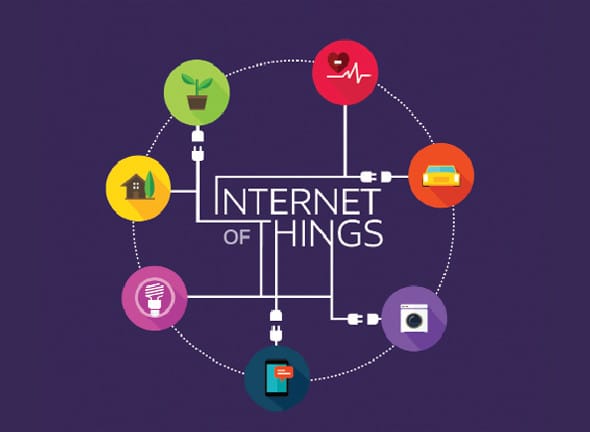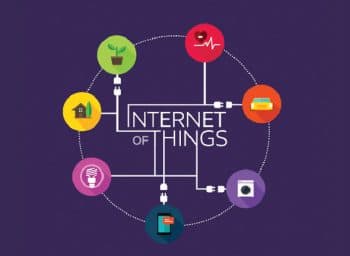The Internet of Things is often referred to by other names the Internet of Everythingor the Internet of Intelligent Objects. It is a network of objects that can communicate with each other. They could be in sensors, electronics or the software that is used to gather, exchange or analyse the data between various devices which is further used for management, planning and decision making. The IoT enables direct connection between physical devices and computer based systems. So this has led to an era in which the connection between devices or objects will be more than the one between human beings. The IoT concept is such that anything with intelligence fed into it, can be connected.

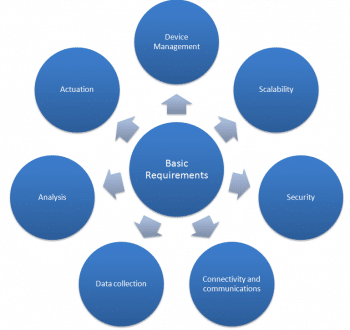
With the continuous evolution in technology, today, the communication between people is reducing while human beings are getting more connected to their devices.
Today, many organisations such as Cisco, GE, etc, are using the IoT for developing their applications.
The importance of the IoT is continuously increasing due the growth of cloud computing, mobile technology and data analytics.
IoT will greatly impact human life. Consider a world in which, based on the time you set for your alarm to ring, the coffee maker will start preparing coffee and the geyser will begin to heat the water for your bath. Outside home, the car will automatically track how heavy traffic is and will apprise you of the situation. When the vegetables in the refrigerator run low, the fridge will re-order more, automatically, from the nearest store. This is what IoT technology is all about.
It includes various technologies that cover wireless sensor networks, RFID enabled tracking, embedded systems, Internet connected wearables, Bluetooth-enabled devices that connect to the Internet, etc.
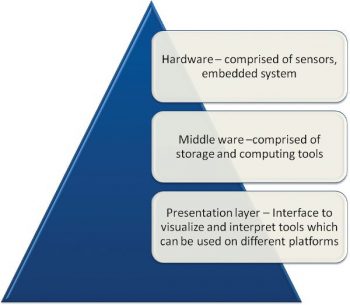
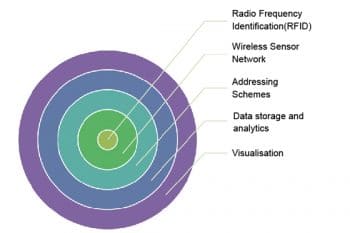
The IoT reference architecture
It is difficult to formulate standard architecture for this technology due to the wide variations in devices, network configurations and so on. So lets consider a reference architecture. Requirements for a reference architecture are based on form factors and the power available for the IoT devices. It also depends on how the devices are manufactured and used. The basic requirements for the design of the architecture can be summarised in Figure 2.
IoT architecture comprises three main components as shown in Figure 3.
The basic technologies enabling the IoT are shown in Figure 4.
The IoT uses electromagnetic fields to transfer the data which can be used for tracking and identifying the objects. It basically depends on small electronic devices consisting of a chip and antenna for transmission of data. These chips are capable of transferring huge amounts of data. These devices work just like a bar code scanner. Every object in the network is provided a unique identity. The devices scan the objects in order to identify them, by recognising the unique ID. The advantage of these devices is that they dont need such precise scanning as required when using bar codes.
Now a days, devices are made up of low-power circuits and support wireless communication, which enables them to be available at a low cost. This enables the creation of devices made up of a large number of intelligent sensors which are used for sensing, data gathering and analysis in various environments. Sensor data is shared between various nodes and then stored at a centralised network for analysis.
The components of a WSN or wireless sensor network are WSN hardware, the communication stack, middleware, secure data aggregation systems, etc.
The success of the IoT depends on each object or devices unique address. Features of this address are uniqueness, persistence, reliability, etc. Handling such a large number of devices requires a platform that is reliable, agile, elastic and easy to use. Such a platform is provided by the cloud. Cloud computing supports the IoT. It is an architecture that provides various technological capabilities such as affordable storage, multi-tenancy, on-demand services, quality of service, a pay per use model and so on. It provides three types of services which are Infrastructure as a Service (IaaS), Platform as a Service (PaaS), and Software as a Service (SaaS).
IaaS provides a platform to use the hardware, which can be provided to the user as a cloud resource. PaaS provides the platform to access the IoT data and to develop custom applications. And SaaS provides the platform for users to run applications.
Visualisation is one of the important aspects of the IoT. It helps users to interact with the environment. The continuous development of touchscreen technologies has led to higher usage of smartphones and tablets. This has helped the lay man to understand and visualise the technology. With the help of visualisation techniques, more useful and meaningful information can be extracted/analysed and depicted. This improves decision making capabilities.
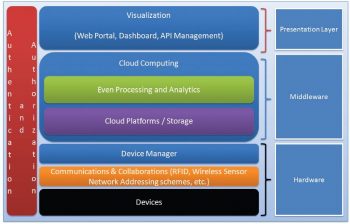
Using IoT technology
It can be useful in various day-to-day scenarios as shown in Figure 6.
Challenges
Like every other technology, there are some challenges with IoT also, such as small organisations finding it difficult to adopt due to budget issues, security risks and so on. Some of the challenges encountered with IoT are:
Security: The IoT connects many devices together. Many devices in a network may be less expensive, and might not have been tested for malware and bugs. So in such a situation, a security assurance cannot be given. Moreover, there are many layers of networks, so communication between various devices at the same time can increase the risk factor with this technology.
Complexity, confusion and integration issues: As the IoT connects various networks which are based on different protocols, testing and integrating them will be very difficult. Currently, there are no standards available, which creates confusion during integration.
Privacy: As there are no universally-accepted compliance parameters available for medical and lifestyle applications, concerns about privacy and trust increase. Multiple users will be accessing the same network, in which case, data security, data accuracy and privacy may get compromised.
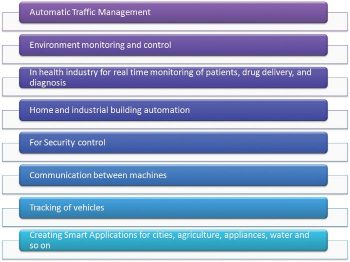
References
[1] https://en.wikipedia.org/wiki/Internet_of_Things
[2] http://www.buyya.com/papers/Internet-of-Things-Vision-Future2013.ppdf
[3] http://www.internet-of-things research.eu/pdf/Converging_Technologies_for_Smart_Environments_and_Integrated_Ecosystems_IERC_Book_Open_Access_2013.pdf
[4] https://www.cisco.com/web/about/ac79/docs/innov/IoT_IBSG_0411FINAL.pdf
[5] http://www.internet-of-things-research.eu/pdf/Converging_Technologies_for_Smart_Environments_and_Integrated_Ecosystems_IERC_Book_Open_Access_2013.pdf






























































